What is the Concept Behind Persian gardens?
Since ancient times, Iranians have been drawn to creating gardens and orchards. Around 3,000 years ago, Persian garden homes known as “Pere Dese,” which means “around the citadel,” were mentioned in Greek sources. The Persian garden is renowned for serving as a bridge between the realms of matter and meaning and as an embodiment of the highest ideals and notions.
The four sacred elements of water, wind, fire, and soil are thought to form the foundation of the philosophical design philosophy of Persian gardens. The topic of Persian gardens and nine of Iran’s most well-known ones are covered in this article.
While the historical and philosophical significance of Persian gardens is profound, their beauty is especially accentuated during certain seasons. Explore the enchanting beauty of Persian gardens in the fall , where the vibrant hues of autumn leaves complement the timeless elegance of these gardens.
Persian Garden History
Persian gardens have their origins in the sixth century BC, when Cyrus The Great, who ruled over a vast area, decided on the design of the ancient Pasargadae garden and ordered that it be built there (close to Shiraz province).
In actuality, Cyrus’ ideas are what gave rise to the Persian garden design, its intricate construction, and the inclusion of natural materials. The Persian garden was designed to promote both physical and spiritual tranquility. Therefore, it is true that the concept of an earthly paradise became a reality during the Achaemenid Empire.
Persian garden, one of the Persian Arts that Influenced Countries around the World
A distinctive garden design that has influenced India from the West, particularly Spain, is the Persian Garden. In contrast to other designs of European or Japanese Gardens, the basic principle of an Iranian Garden is the construction of paradise in the desolate Iranian Plateau, much like a thriving oasis in the desert.
On a Moorish palace scale, the gardens of the Alhambra from the al-Andalus era in Spain demonstrate the influence of Persian garden philosophy and style. Some of the largest Persian gardens in the world, which date back to the Mughal Empire in India, may be found at Humayun’s Tomb and the Taj Mahal.
The Old Days of Persian Gardens
The gardens that the Sassanids built in Persia were influenced by Zoroastrianism. The value of water flowing through the yard was more stressed, and the four-quarters of the garden were thought to represent the four seasons of the year. The Sassanid era is also when a Persian garden was first depicted in writing.
One of the first examples of engraved art that illustrates the Persian garden’s geometry is the hunt garden of Khosrow Parviz, the Sassanid dynasty’s king, in the Taq-e Bostan bas-relief. Gardens underwent a major aesthetic upgrade throughout the Islamic era.
Persian Garden Features
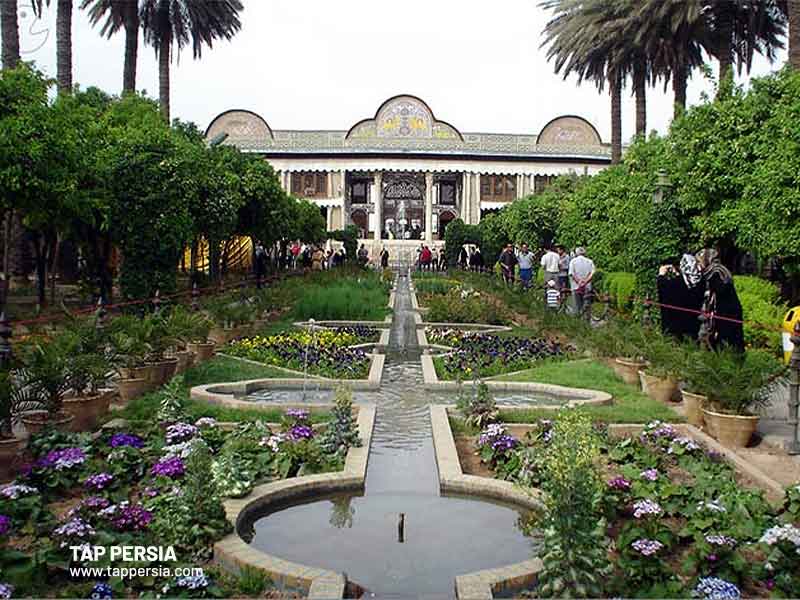
Not only are Persian gardens distinctive due to their architecture, geometry, and design. The Iranian garden is significantly enhanced by symbolism. A wonderful depiction of symbolic and physical beliefs, the garden combines natural and manmade components.
Each component of the garden has a different interpretation, but most people concur that it symbolizes a paradise on earth. In addition, the water denotes men’s and women’s purity, the evergreen trees, particularly cypress trees, signify immortality, and the four sections known as Chahar Bagh (four gardens) symbolize the universe whose architect is God. They are priceless not only for their symbolic meaning but also for their practicality.
An Inspiration for Persian Arts
The concept of the Persian garden has impacted the design, decoration, and description of other works of art, including Persian carpets, ceramics, calligraphy, music, and poetry because Iranians value art in a variety of forms. Persian carpets are a fantastic example of Persian gardens among all of these.
It might be more accurate to describe the carpet as a flat Persian garden with trees, flowers, and birds since many carpet designs are inspired by the Persian garden.
Ancient Persian Gardens
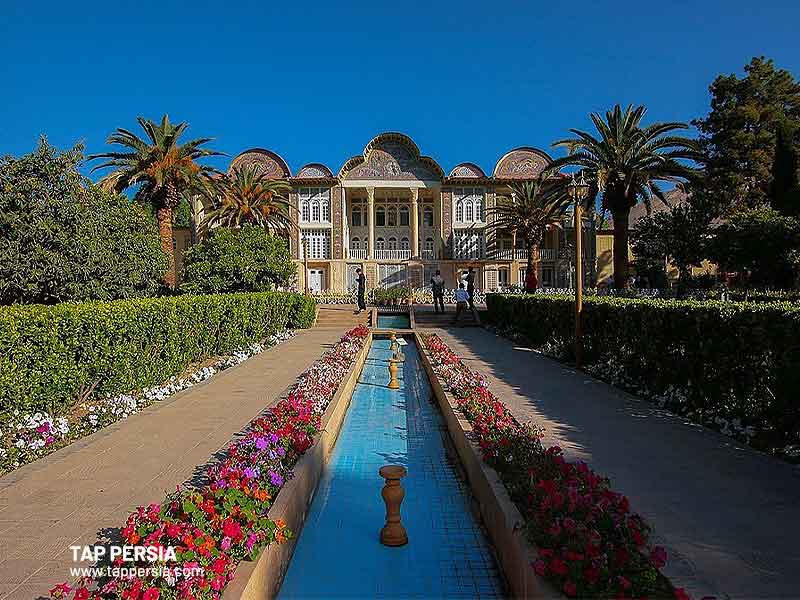
Since Pasargadae’s creation in the sixth century BC, a lot of time has passed. However, the mathematical and architectural elements of the Persian garden have been preserved. It has also spread to other nations, including Andalusia in Spain and Agra in India.
Furthermore, the Persian gardens listed as UNESCO World Heritage Sites include Pasargadae Garden, Chehel Sotoun, Eram Garden, Fin Garden, Dowlatabad Garden, Shazdeh Garden, Abbasabad Garden, Akbarieh Garden, and Pahlevanpour Garden. These gardens draw tourists to Iran due to their preserved designs and beautiful scenery. The word “paradise,” which comes from the old Persian word “Pardeiza,” which means “a wall around,” describes a closed-off area.
Where are Persian gardens located in Iran?
The Persian Garden is made up of nine gardens that were chosen from different parts of Iran and that vividly depict the numerous configurations that this style of designed garden has taken over the years and under various climatic circumstances.
Here are some amazing Persian gardens:
1. Pasargadae Persian Garden
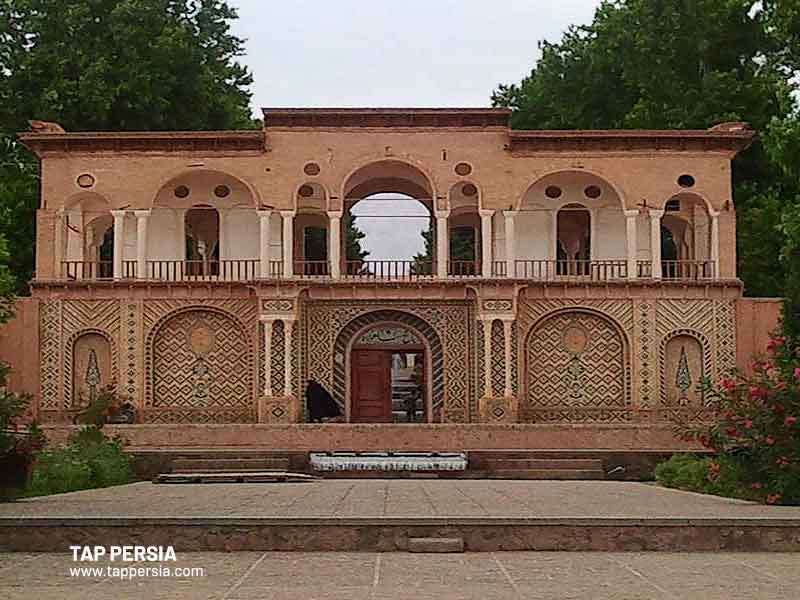
The Pasargadae garden, which has a long history, is regarded as the oldest and earliest garden ever planned in human history. Cyrus the Great mandated the establishment of this garden. It was built in a 249-hectare area to the north of Shiraz as the first prototype for Persian gardens.
The architect divided it into four divisions from a planning perspective, with “water” serving as the key component in architectural projection and arrays. In fact, this garden has the four main components of Zoroastrian belief: earth, water, air, and light.
2.Eram Persian Garden Shiraz
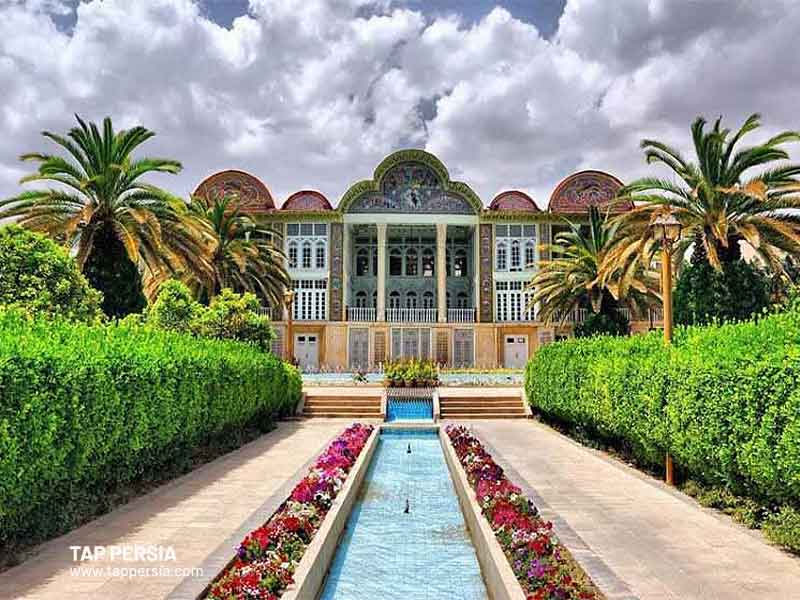
The Seljuk-era city of Shiraz and the province of Fars contain the Eram Garden. The architecture at Eram Garden is modeled after the Qajar era and incorporates Zand era fashions.
Due to its plasterworks, tile works, architecture, and striking paintings, this world heritage site is a one-of-a-kind masterpiece. Persepolis served as inspiration for the construction of the columns on the higher floors. On either side of the façade’s peak are two crescent-shaped parts, and in the center is a big piece with magnificent illustrations from the Shahnameh.
3. Fin Persian Garden Kashan
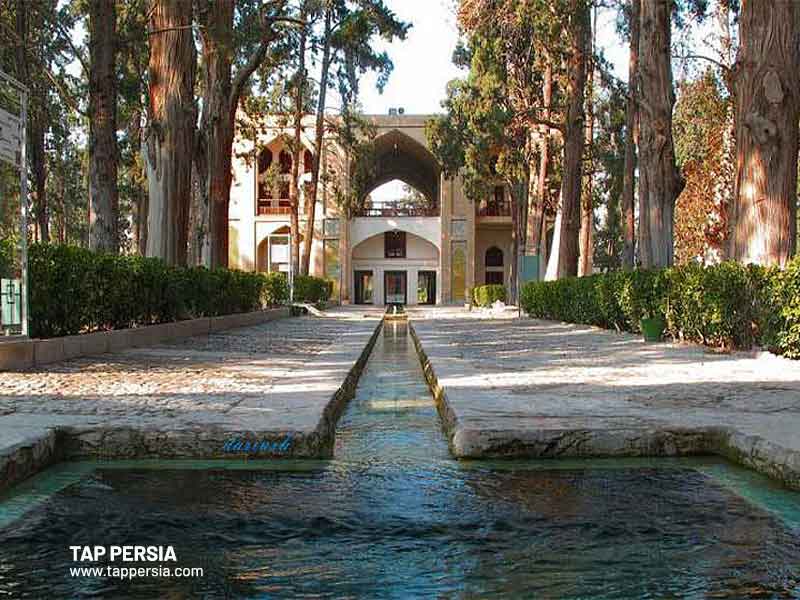
One of the most well-known and stunning gardens, Fin Garden is regarded as a full illustration of Persian Gardens. Royal guests flocked to Kashan‘s Fin neighborhood because it had a refreshing spring. Fin Garden was originally built during the Safavid Dynasty, although several structures were later constructed in the center area over various eras.
The design of Fin Garden heavily emphasizes water. The many gutters and ponds improve the landscape and its perspective. Watching fountains spray water in the center of a pool in a landscaped yard is incredibly wonderful. Tile in a turquoise blue color adorns the pools, giving them a stunning appearance. Interior portions were also embellished with beautiful tile designs, which beautifully doubled the splendor of Fin Garden.
4. Shazdeh Persian Garden Mahan
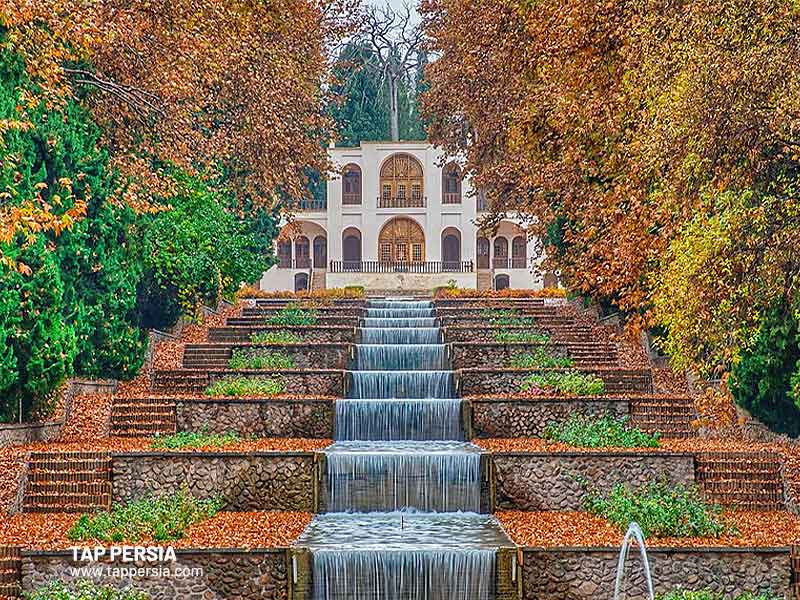
In the province of Kerman, 6 kilometers from the town of Mahan lies the Mahan Shahzadeh Gardens, often known as “the gardens of Mahan’s Prince.” They are surrounded by walls and have a rectangular form that spans more than five hectares. On the side opposite them, in a higher location, was a house, and access to them was by a gate in the lower portion. Because of the natural inclination of the land, the park was ornamented with fountains that were always flowing with water. The Qajar dynasty’s prince Mohammad Hasan Khan, as the name implies had these gardens constructed in 1850; subsequent kings later expanded them.
5. Abbas Abad Persian Garden Behshahr
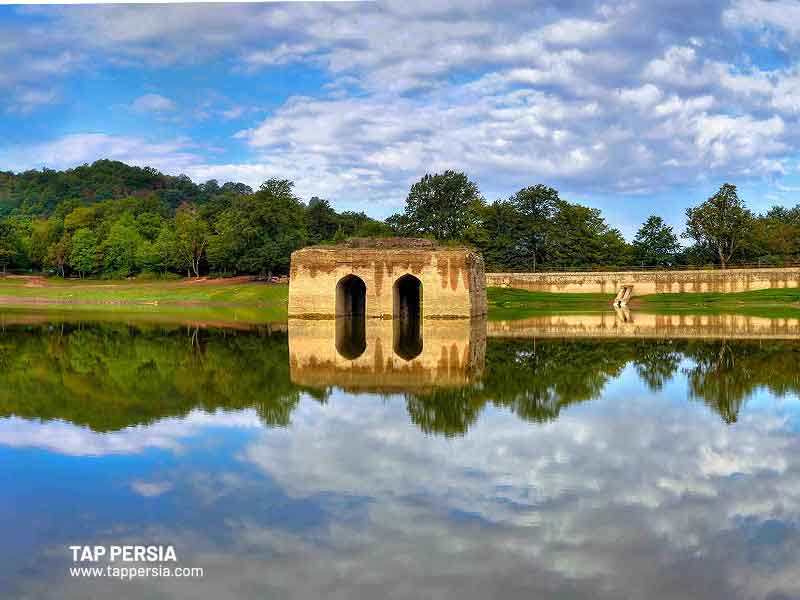
In the northern Iranian hamlet of Altappeh lies the Abbas Abad Gardens. They were constructed about 1613, during the reign of Shah Abbas I, and they have Safavid-era architectural features. The Safavid kings like to stay in these gardens because of their magnificence, which includes fountains, canals, ponds, and numerous trees. The park was abandoned beginning in the late 17th century and wasn’t found again until 1967; it is now a Unesco World Heritage Site and the focus of excavations.
6. Chehel Sotoun Persian Garden Isfahan
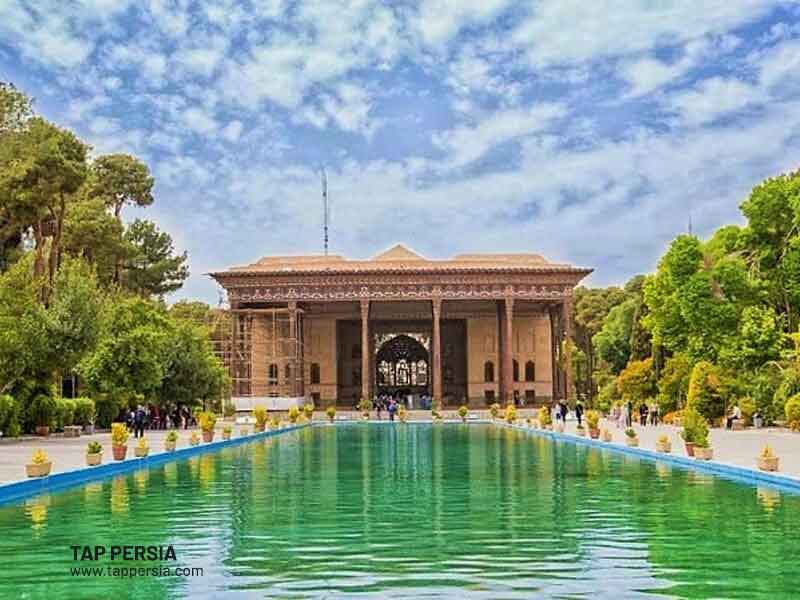
Another of Iran’s greatest Persian gardens, Chehel Sotoun Palace, can be found not far from Isfahan‘s magnificent Naqsh-e Jahan Square. The Persian name for this ancient location is 40-column palace. In actuality, the portico has 20 columns. There are 40 columns there in addition to the reflection of these 20 in the water of its pool. Shah Abbas II constructed it on a 67 000 square meter plot of land. The centerpiece of the garden layout is the home in the center of it.
This mansion has a mirror hall, two eyvans on either side, two big northern and southern halls, an outdoor 20-column hall, a large pool in front of the structure, and a smaller one in the back. Beautiful paintings that depict the royal way of life, important occasions, and everyday life of the populace adorn the walls and ceilings within.
7. Akbarieh Persian Garden Birjand
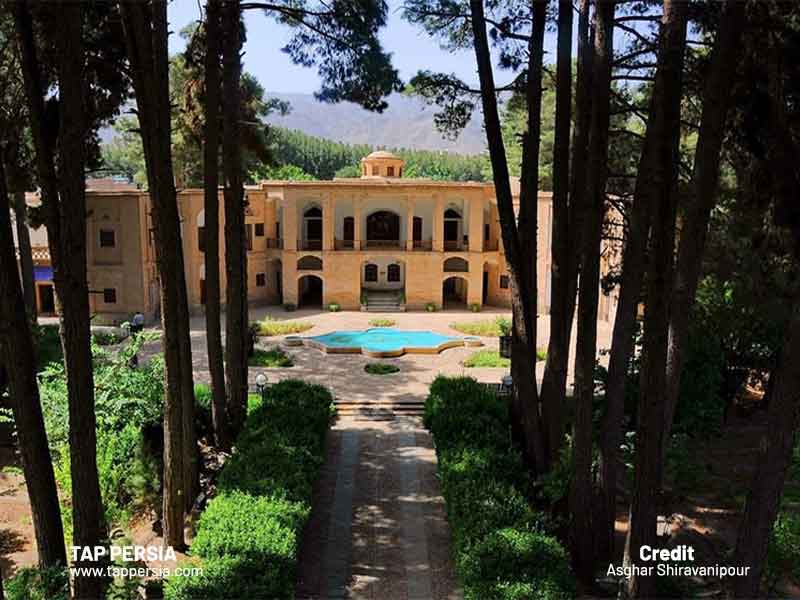
It has 45000 square meters in size, was built during the Zand and Qajar dynasties, and is situated on a mountainside. There are a few buildings there, the “Heshmat Ol-Molk” building being the oldest.
This two-story building’s architect added stained glass accents, wood latticework, and word-carved embellishments (Monabat) to beautify it. At this structure, one can also witness lovely Eslimi (Arabesque) and geometric stucco motifs.
8. Pahlavanpour Persian Garden Mehriz/Yazd
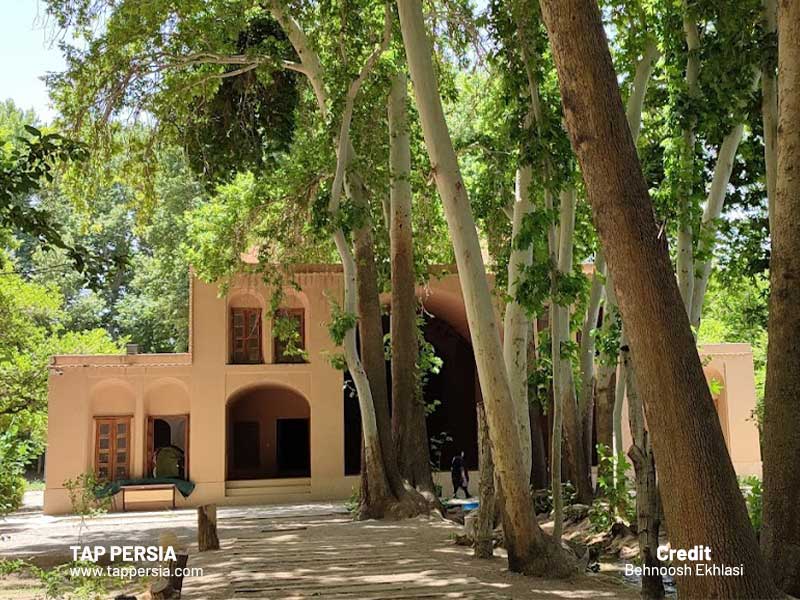
The approximately 5-hectare Pahlavanpur Garden, which was established by a trader by the name of Pahlavanpur during the Qajar era, is situated in the province of Yazd and the city of Mehriz.
This garden receives its running water from the “Hasanabad” aqueduct, which does not directly flow through any other gardens in the area. An entrance building, Gelin Tower, pavilion building, Zemestankhaneh (winter house), stables, carpet weaving and spinning workshop and storage are among the structures in Pahlavanpur Garden.
The two-and-a-half-story pavilion structure in the middle of the garden, which has a special beauty from the water flowing through it, is constructed.
9.Bagh-e Shahzadeh, Kerman
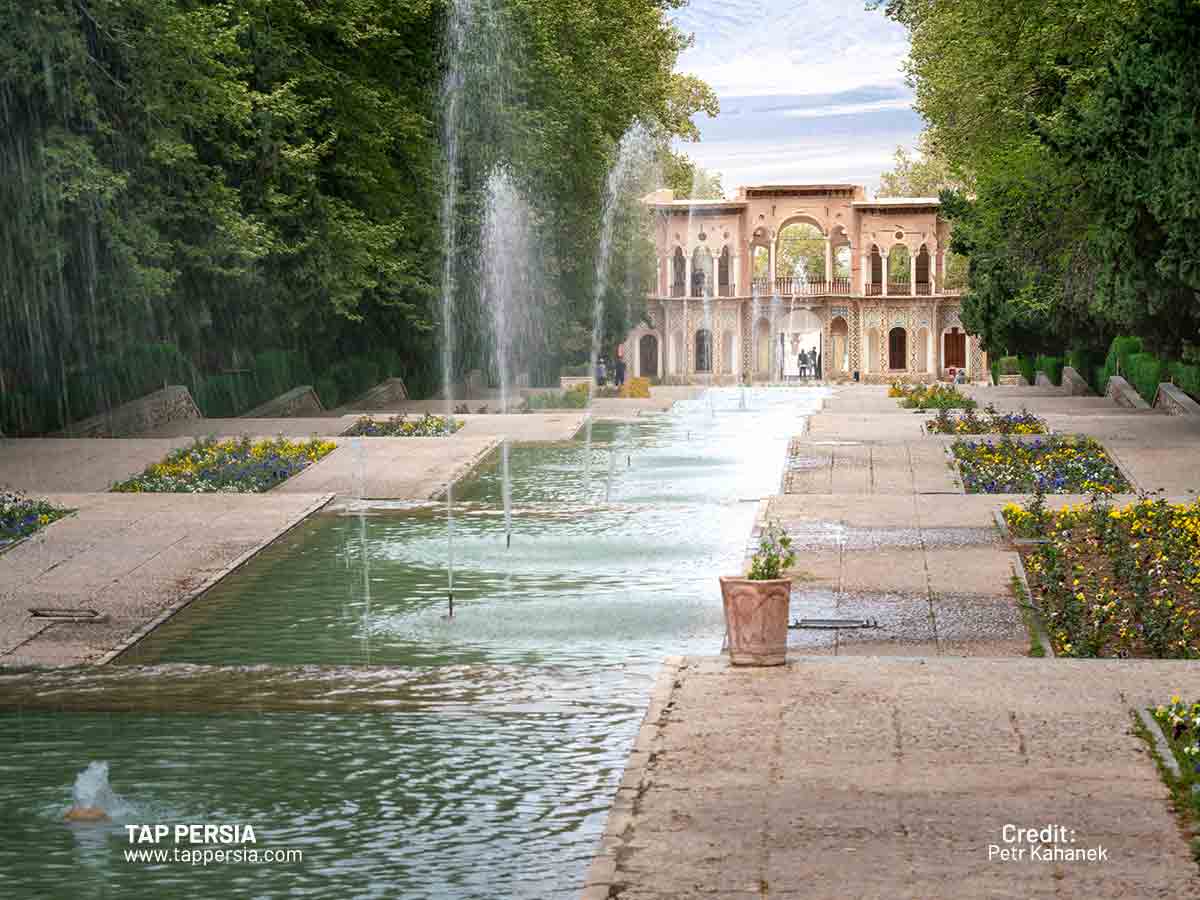
Mahan, a city southeast of Kerman, is the location of the magnificent Shahzadeh Garden, a sizable garden with a magnificent building from the Qajar era. The park, which was rebuilt in 1991 for the Khaju Kermani remembrance celebration, has a number of pools and trees. In the center of the city, a historic guest house has been built for tourists and visitors.
The garden is an outstanding example of a Persian garden that makes use of the climate, with water fountains cascading from the upper to lower ends. The entrance to the garden has a two-story, linear façade that highlights the creative use of the local climate. Living and dining spaces can be found in the second story. In addition to the entry building, this garden has a royal mansion and a bathroom.
Currently, the once-royal mansion serves as a restaurant and is managed by the private sector. This garden has many different fruit trees, and the fountains and ponds have created a beautiful waterfront. Shazdeh Garden was among the gardens being prepared for inscription on the UNESCO World Heritage List by experts from the Research Centre for Historical Sites and Structures in 2005. The Garden was officially listed in June 2011.
10.Bagh-e Dolatabad, Yazd
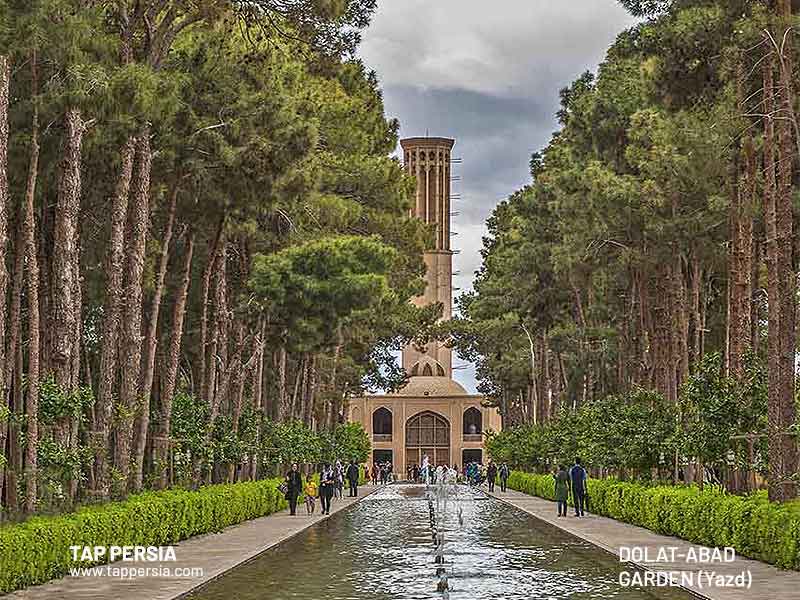
The Dowlat Abad Garden is home to a variety of structures that were created and assembled by Mohammad Taqi Khan in the Zandieh dynasty. Khan, his officials, and their government lived there. This garden’s 33-meter-tall wind catcher is regarded as a marvel of architecture and a representation of the ingenuity, intelligence, aptitude, and artistry of Yazdi architects|(Yazd). The endeavor of the architect to choose deft angles to provide the best views and landscape within is thought to be one of the designs of this building’s most significant features. The Dowlat Abad garden is recognized as one of the attractions worth seeing because of its lush landscaping expertise, irrigation system, and the diversity of its architectural features.
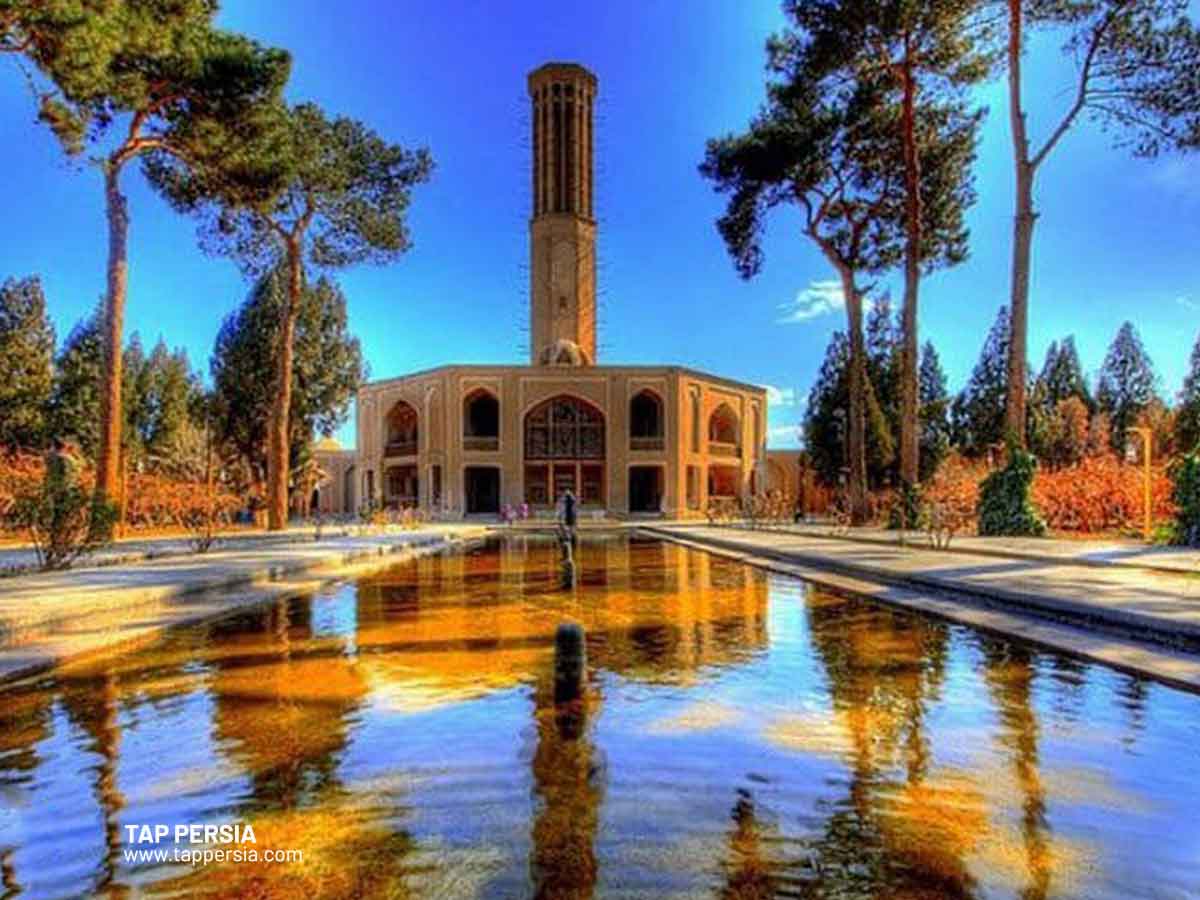
The building has been designated as a historic one because of this. Due to its scenery and elaborate architectural design, Dolatabad Garden is recognized as one of the places that are worth visiting. These features showcase the variety of Persian garden layouts that have developed and adjusted to various climatic conditions. A thrilling adventure awaits you when you visit this extraordinary example of traditional gardening.
11.Bagh-e Afifabad, Shiraz
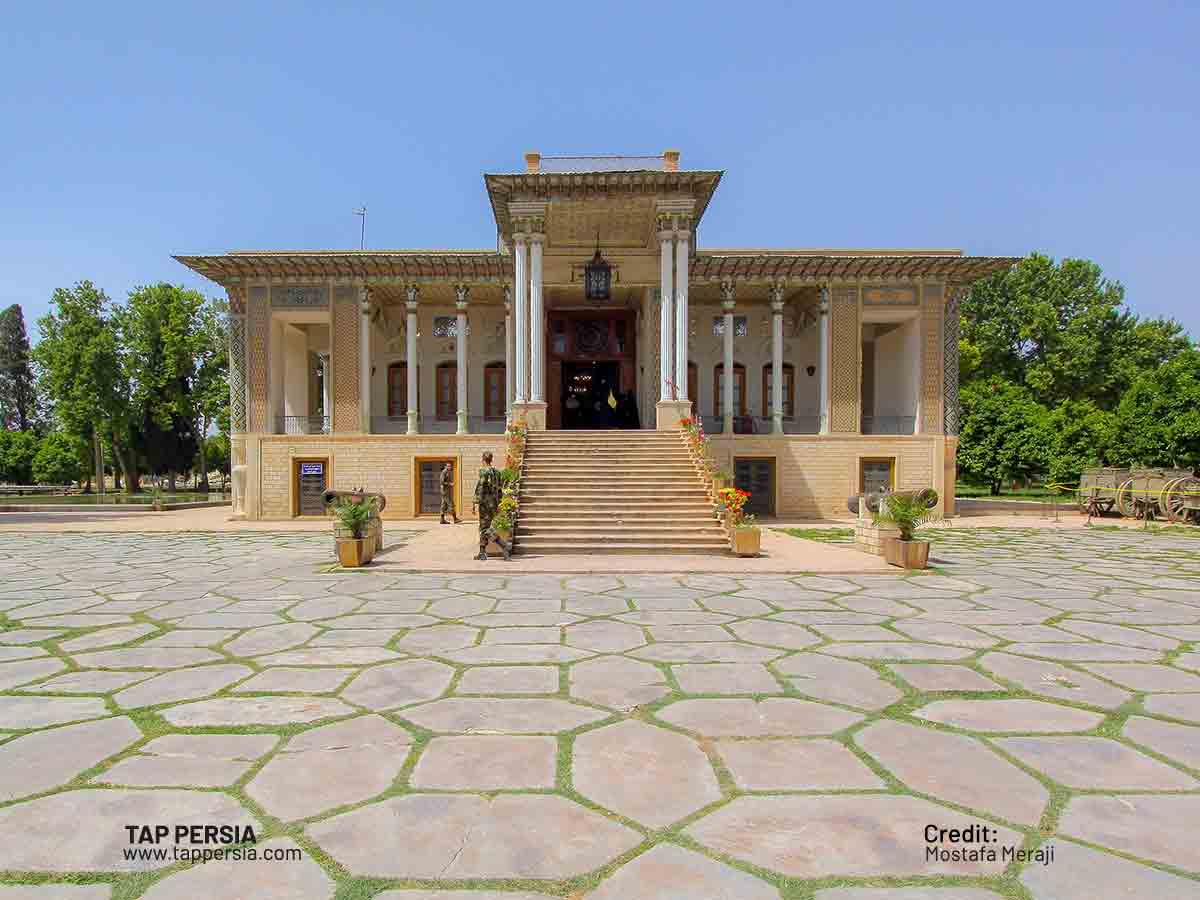
One of the most exquisite old gardens in Fars Province, Afif-Abad Garden (Bagh-e Gulshan or Golshan Garden) in Shiraz, was constructed in 1863, and it has a size of over 127,000 square meters. Mohammed Khan Qavamol-Molk requested the two-story building be built, and it has been done. It served as the Safavid Kings’ palace during their dynasty. There is an open-to-the-public Persian garden there, as well as a former royal residence and a museum of ancient weapons. The Iranian tradition of flower gardening is represented by Afif Abad Garden. It may be found in Shiraz’s affluent neighborhood.
The garden’s architecture is a synthesis of styles from the Achaemenid, Sassanid and Qajar periods. There are about 30 chamber halls on the two stories of the manor’s construction.
The North and south of the hall are home to two carved marble fireplaces. There is currently a military museum on the lower floor, and there is a lovely fountain there. Three steps connect this floor to the second floor. The second level is divided into a series of interconnected rooms by a long corridor. This floor is highlighted by a stunning, large hall. It features a wooden roof and is decorated with images of flowers and vegetation, hunting preserves, celebration, and joy. The “Ebrat Museum” (The Lesson Museum) is located on this floor all around.
12.Bagh-e Jahan Nama, Shiraz
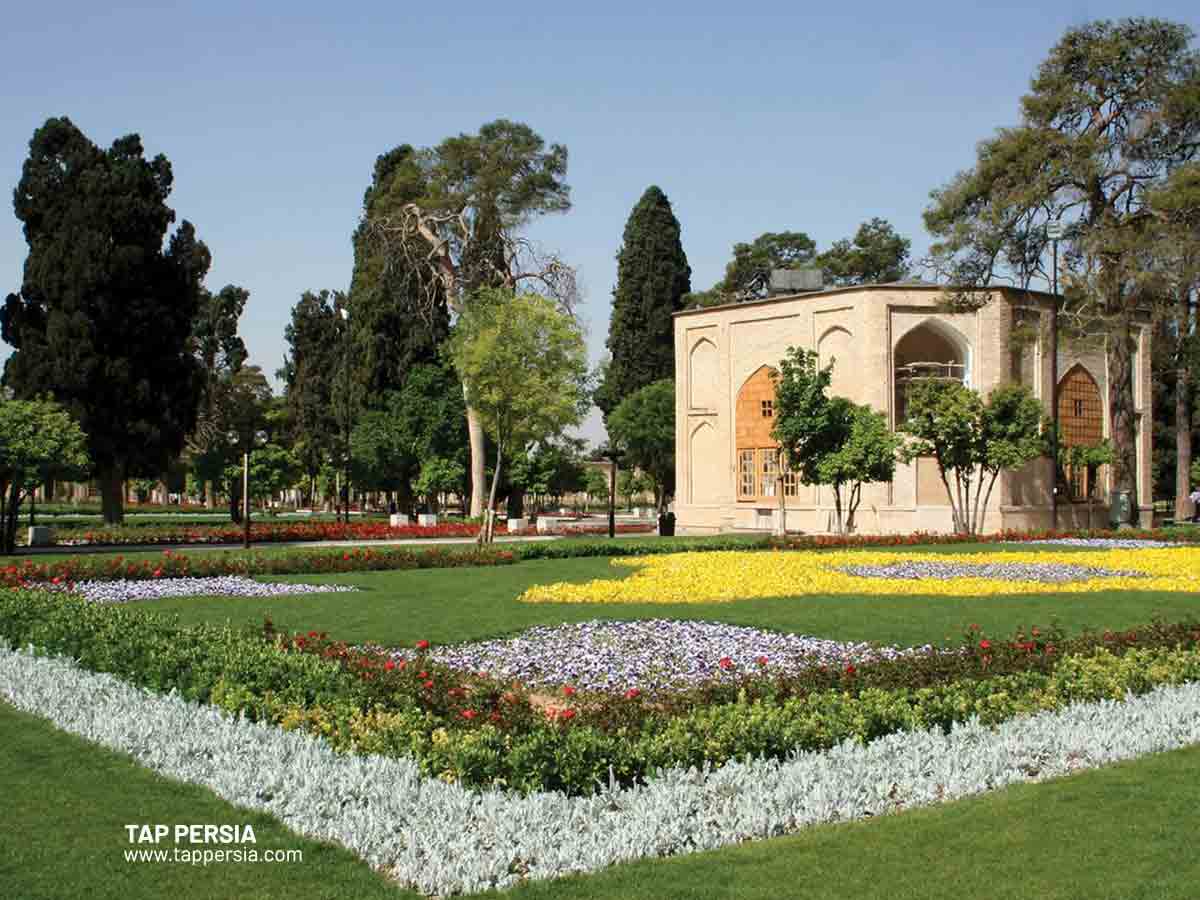
A sizable walled garden, Baghe Jahan Nama or Jahan Nama Garden, has existed since the 13th century CE. In 1771 AD, Karim Khan-e Zand issued the order to reconstruct the Garden. An octagonal manor resembling the Kolah Farangi building of Bagh-e Nazar (Nazar Garden) can be found inside the garden.
It is Shiraz’s oldest garden, covering a roughly 40000 square meter area and receiving irrigation from the renowned river Rokni. In each of the four corners, you’ll find four alcoves with two-story rooms. A stone fountain and an octagonal pool made of incorporated marble are located inside the mansion. The painted decorations within the manor are exquisite and priceless.
The Jahan Nama Garden has been listed as one of the affluent and magnificent gardens, and the Garden’s palace has been hosting government dignitaries. There are many kinds of cypress trees, old pine trees, citrus and fruit trees, and more in the Jahan Nama garden. During the Qajar era, the garden served as a venue to welcome official visitors.
13.Bagh-e Narenjestan, Shiraz
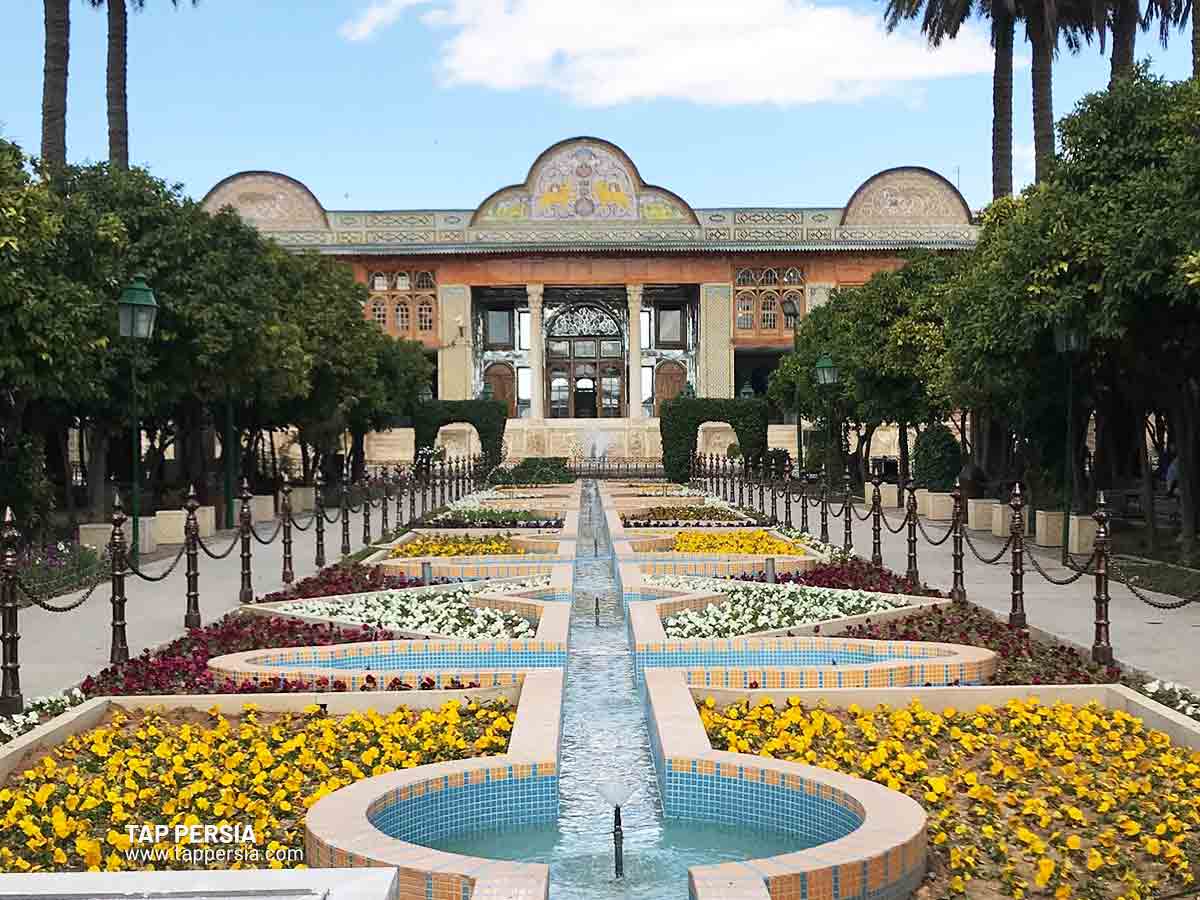
One of Shiraz’s most alluring sites is the Narenjestan Garden, popularly known as Ghavam Garden among the locals. Due to the large number of orange (Narenj) trees present, the garden was given its name. The garden, which is currently among Shiraz’s most opulent tourist attractions, was constructed under Nasser al-Din Shah Qajar’s rule and on Ali Mohammad Khan Ghavam’s direction.
The park in Narenjestan at the time served as a government building, a venue for meetings with foreign dignitaries as well as for both military and political business.
Even though Narenjestan Garden is not very large, it is incredibly elegant and features a grand palace. The Ghavam complex is divided into two sections that are joined by a tunnel: the outside, which houses the Narenjestan Museum, and the inside, which has the Zinat al-Muluk home.
This complex’s structures are spread out across a 3500 square meter space, and they are situated on the north and south sides. These two structures were created by architects and artisans from Shiraz employing techniques including mirror work, muqarnas, engraving, brickwork, Monabat, plasterwork, Moaragh, and carving, among other arts.
14.Bagh-e Nazar, Shiraz
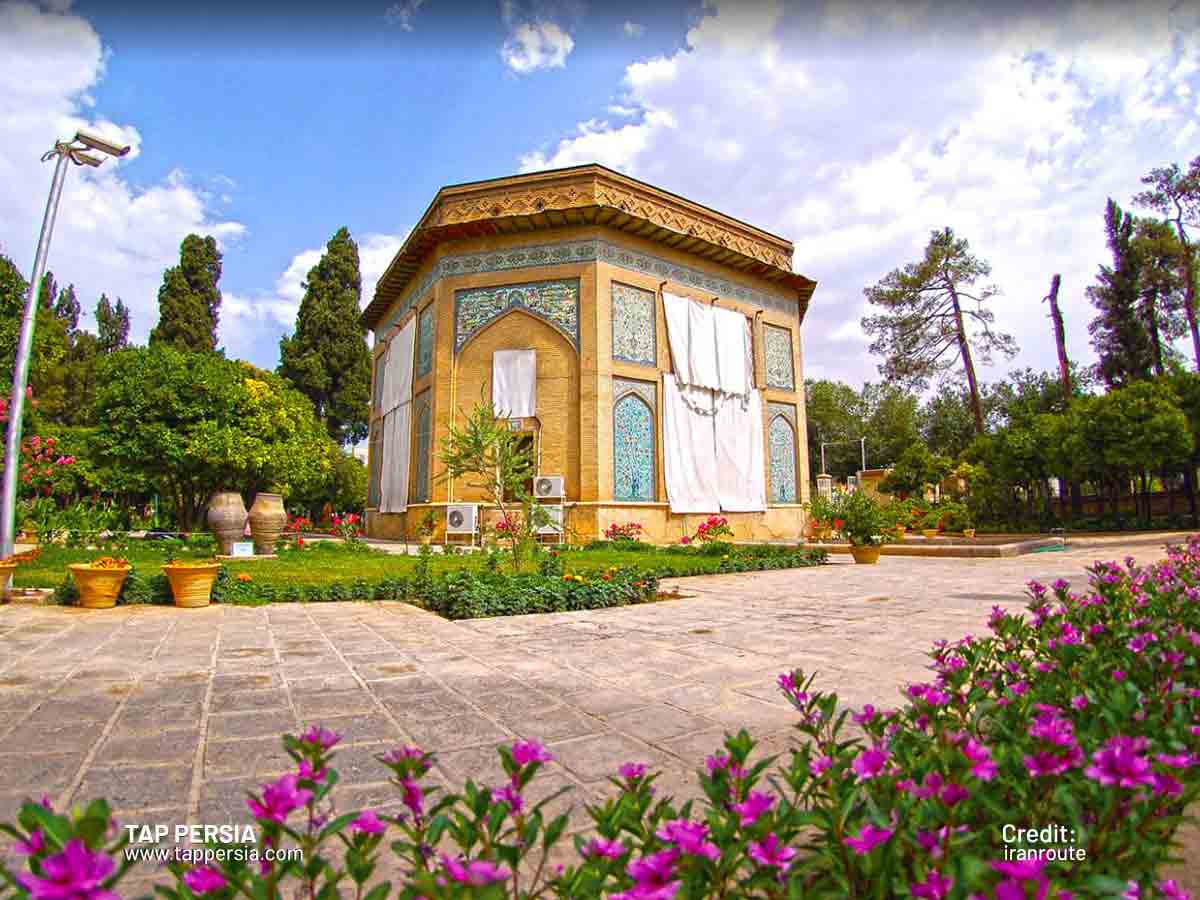
Located on the southern side of Toopkhaneh Square, Nazar Garden was the first garden built under the Zand Dynasty. Many cedar, pine, and bitter orange trees may be seen in the garden. During the Zand Dynasty, it served as the administrative garden and was set aside for hosting dignitaries from other countries and conducting salutation rituals.
Karim Khan Zand, who was buried there, gave the order to build the octagonal pavilion in the garden’s middle. Karim Khan’s remains, however, were later cruelly taken to Aqa Mohammad Khan’s home in Tehran (Golestan home), where the founder of the Qajar dynasty (1785–1925) interred them beneath the stairs he used to walk over every day.
The Bagh-e Nazar pavilion was turned into a museum (the Pars Museum) in 1936. The outside walls and spandrels of the museum are covered with beautiful tile work that features bird and floral themes as well as hunting and feast scenes. The Pars Museum is a treasure trove of priceless artifacts from pre-Islamic and Islamic times, including lacquered works, paintings, manuscripts, pottery, and paintings. The mausoleum of Karim Khan Zand in the eastern chamber is the section of the museum that receives the most visitors.
15.Bagh-e Takht, Shiraz
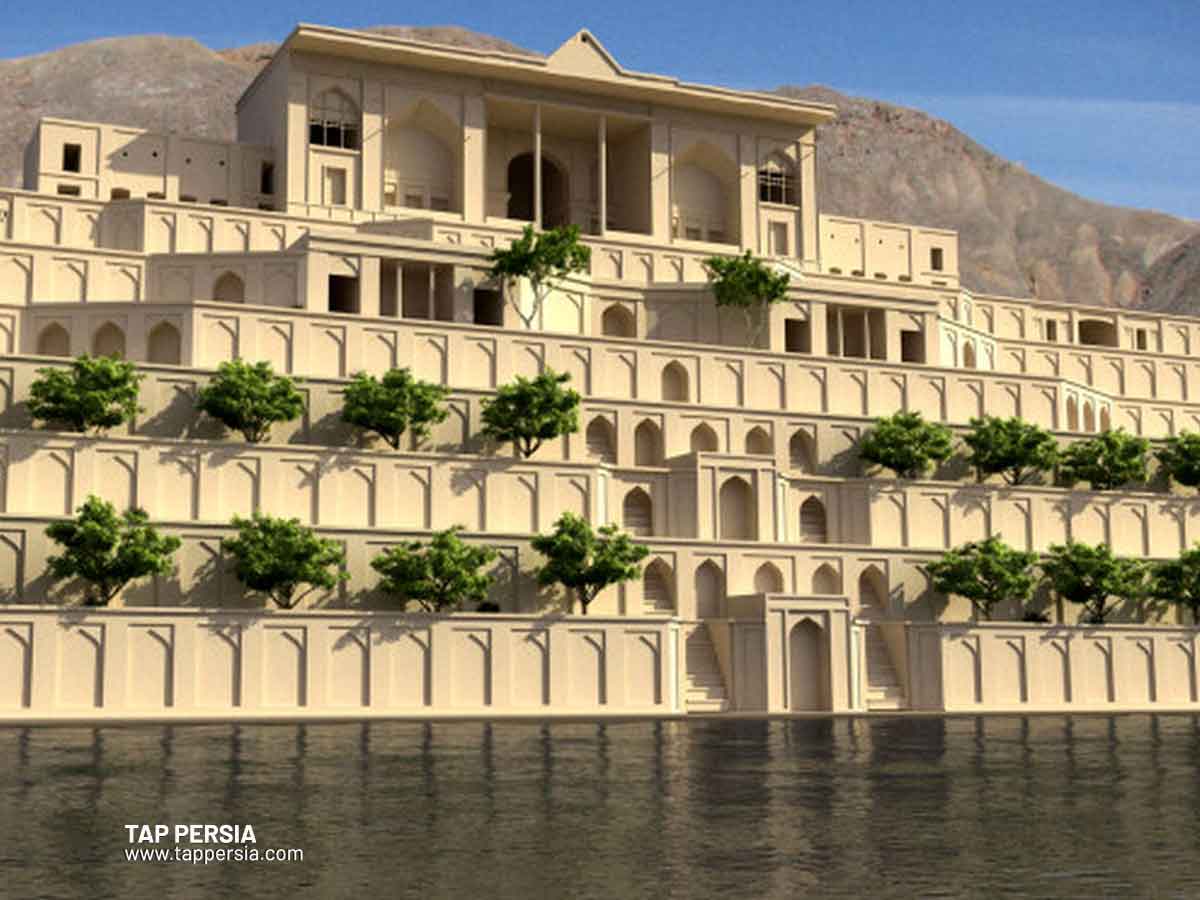
The Bagh-i Takht is an ancient garden that may be found north of Shiraz on a rocky slope. It dates back to the eleventh century. It was a formal garden with several terraces and a palace on the top terrace, with a central water channel. According to historical records, a local prince by the name of Atabek Qaracheh created a garden on the location of the Bagh-i Takht around the eleventh century. Both “Khaneh Shah” and “Bagh-i Firdaus,” gardens documented by historians in the seventeenth century, are thought to represent the modern Bagh-i Takht.
The same garden was referred to by historians of the eighteenth century as the “palace of Ferodus,” and subsequently, in the nineteenth century, it was known as “Takht-i Qajar.” The name “Bagh-i Takht” for the garden didn’t come into use until around 1850.
Early in the nineteenth century, it was discovered that the palace’s erection was really dated to 1789 and assigned to the Qajar emperor Muhammad Shah (1796–1797). Fat’h Ali Shah (1797–1834), Muhammad Shah’s nephew and successor, is also credited with building the Bagh-i Takht.
The Bagh-i Takht is designed as a formal garden even though it is spread out across eight terraces. A water channel that is typical of Persian gardens runs through the middle of the garden, cascading down from terrace to terrace until it reaches a big rectangular pool at the lowest level. According to historical accounts, the proprietors cruised in the pool, also known as the daryacheh (little sea), using tiny boats. The spring that supplies the water is tucked away in the rocks above the garden.
Each terrace is symmetrical in size and design, with the water channel serving as the reflecting axis, with the exception of the highest terrace, which is where the palace is situated. With each increasing terrace, the terraces get narrower and longer. With the exception of the two top terraces that precede the palace, which was likely planted with flowers, every terrace had fruit trees.
What is Garden Called in Persian?
In the Persian language, “Bagh” means garden.
What Three Things Distinguish the Persian Garden From Any Other?
Persian gardens contain unique qualities that set them apart from other gardens, including natural elements, summerhouses or interior chambers and halls, walls around the gardens, water streams, and distinctive geometric art.

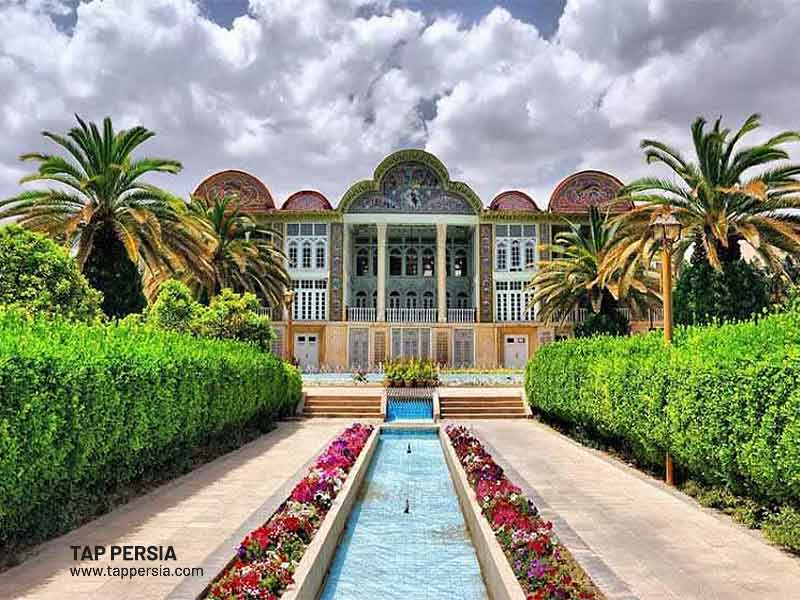


[…] A Qanat which literally means ‘channel’ in Persian is an underground tunnel that directs fresh water from a source in the mountains to an opening at a lower altitude for the purpose of irrigation. The Qanat is an ingenious and sustainable way to easily provide a reliable supply of water to all societies living in hot or arid regions of Iran. However, this ecosystem has many other remarkable uses, for instance, it is used as a cooling system, a fridge, and a sustainable way of maintaining traditional Persian gardens. […]